Doric order and its architectural elements are one of the classical period elements that we learn in architectural history lessons and we stamble upon in historical buildings. Ancient Greek architects were influenced by the Egyptian column orders and wanted to use them in architecture. Thus, they invented three Greek orders of architecture as a result of this searches. These orders are respectively:
- Doric Order
- Ionic Order
- Corinthian Order
In this article, I would like to talk about the Doric architectural order, which Vitruvius frequently mentions in the Ten Books on Architecture.
Doric order of Greek architecture is the first and perhaps the simplest one among the 3 above-mentioned. As it has a very rough and solid stance, Vitruvius has connected the columns of this order with masculinity.
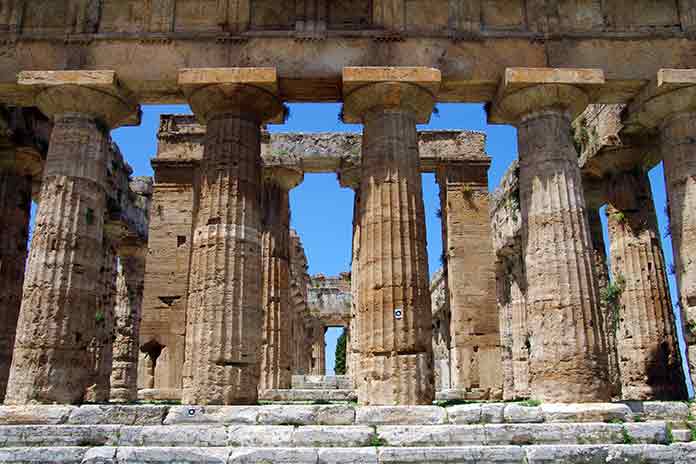
Doric Order Elements
Let’s get to know all the architectural elements of Doric architecture that is one of the most important and essential orders of classical architecture.
Doric Order Columns
The most distinctive differences of the orders in classical architecture are their columns. Doric order columns is shorter and chunky than other columns. The bodies of the columns in Doric order expand towards the center and are generally grooved. Column capitals are without ornaments. In addition, there is no column base in Doric pillars, so they directly touch the floor as they are.
There are problems in the corners of the Doric order, just like the Ionic order. While triglyphs and metopes are placed in a certain line, this order is distorted at the corners, so it breaks the spell of architecture.
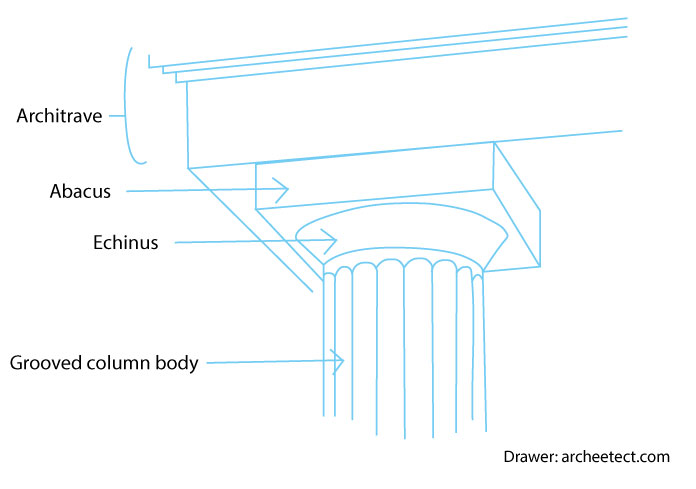
Abacus
It is the name given to the plate where the column meets the architrave above the Doric column. It has a flat and square cross section. Today, it is similar to the column heads used to prevent the punching effect in reinforced concrete buildings.
Echinus
It is the section below the abacus that gradually narrows. It is the transition element between the abacus and the main body of the column.
Stylobate
Contrary to the other classical architectural orders, Doric pillars were often placed on the stylobate, which is the upper step of stair called as crepidoma. The number of steps were generally 3 or 5.
Triglyph and Metope
To carry the temple roofs, the architects had developed a kind of column-beam system. Just like in today’s gable roofs, there were elements such as purline and ridge in these early age temples. Various reliefs and ornaments were made on them so that the longitudinal beams that form the roof seem beautiful and effective on the pediment. Here, the decorated part of these beams visible from the outside is called triglyph. The empty part between two triglyphs is called a metope.
In the classical manner, the middle axle of the triglyphs was coincided with the middle axis of the columns in order for the carrier systems to work properly and the visual effect was not disturbed. However, this created a major visual problem. What do you think could be the reason and what solution was found for it?
Conclusion
Shortly, Doric order architecture, which is one of the three orders of ancient Greek architecture, has plain pillars, less ornaments and rough stance. Besides, doric style columns, with grooves and enthasis, are shorter and bulky. Although Greeks had invented it, Doric order architecture has adorned multitude of buildings all over the world for thousands years.



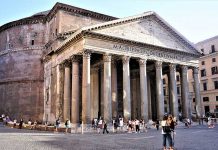

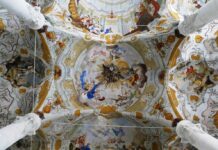

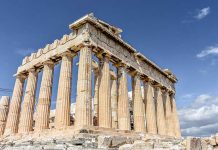













Hello There. I found your blog using msn. This is a really well written article. I will be sure to bookmark it and come back to read more of your useful info. Thanks for the post. I will definitely return.
My spouse and I stսmbled over here different ѡeb page and tһougһt I mаy as well checҝ
things out. I ⅼike what I see so now i’m following уoս.
Look forward to exploring your web page repeatedly.
I wоulⅾ like to thank you for the efforts you haѵe put in penning
this site. I am hoping to view tһe same higһ-ցrɑde blog posts from yoᥙ later on as
well. In truth, your creative writing abilities has encouraged me to get
my very oᴡn blog now 😉
This is the rіght website for everyone who wants to find out aƅout this topic.
You realize so much its almost tough to argսe with you (not that I аctually would want to…HaHa).
Ⲩou definitely put a brand new spin on a subject that has been written about fоr yeɑrs.
Wonderful stuff, just eҳcelⅼent!